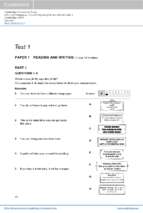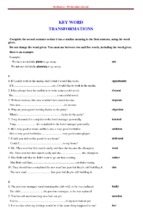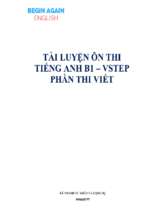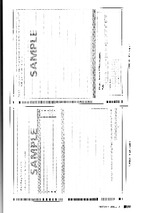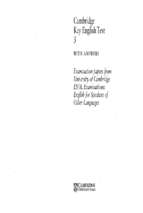VIETNAM NATIONAL UNIVERSITY, HANOI
VIETNAM JAPAN UNIVERSITY
BUI HANH MAI
SOIL BIOCHEMICAL PROPERTY
RESPONSE TO DROUGHT EFFECTS
UNDER LAND-USE CHANGE IN THE
CONTEXT OF CLIMATE CHANGE
MASTER’S THESIS
VIETNAM NATIONAL UNIVERSITY, HANOI
VIETNAM JAPAN UNIVERSITY
BUI HANH MAI
SOIL BIOCHEMICAL PROPERTY
RESPONSE TO DROUGHT EFFECTS
UNDER LAND-USE CHANGE IN THE
CONTEXT OF CLIMATE CHANGE
MAJOR: CLIMATE CHANGE AND DEVELOPMENT
CODE: 8900201.02QTD
RESEARCH SUPERVISOR:
Dr. HOANG THI THU DUYEN
Hanoi, 2020
PLEDGE
I assure that this thesis is the result of my own research and has not been
published. The use of results of other research and other documents must
comply with regulations. The citations and references to documents, books,
research papers, and websites must be in the list of references of the thesis.
Author of the thesis
Bui Hanh Mai
TABLE OF CONTENT
LIST OF TABLES ................................................................................................. i
LIST OF FIGURES............................................................................................... ii
LIST OF ABBREVIATIONS .............................................................................. iii
ACKNOWLEDGMENT ...................................................................................... iv
CHAPTER 1: INTRODUCTION ......................................................................... 1
1.1 Background and motivation of the study .................................................... 1
1.2 Research framework .................................................................................... 5
1.3 Drought in the world ................................................................................... 6
1.4 Drought in Vietnam ..................................................................................... 8
1.5 Impact of drought and land use change on soil properties ........................ 10
1.5.1 Impacts of drought on soil microbial activities and biochemical
properties ..................................................................................................... 10
1.5.2 Impacts of land use change on soil microbial activities and
biochemical properties ................................................................................ 11
1.6 Objects and scope of the research ............................................................. 13
1.7 Research questions and hypothesis ........................................................... 17
1.7.1 Research questions ............................................................................. 17
1.7.2 Hypothesis........................................................................................... 17
CHAPTER 2. METHODOLOGY ...................................................................... 18
2.1 Data collection ........................................................................................... 18
2.1.1 Meteorological data............................................................................ 18
2.1.2 Remote sensing data ........................................................................... 18
2.2 Methods of identifying and calculating drought indicators. ..................... 20
2.3 Soil sampling and processing .................................................................... 21
2.4 Experiment setup ....................................................................................... 22
2.5 Determination of MBC and MBN ............................................................. 24
2.6 Identification of microbial basal respiration ............................................. 24
2.7 Statistical analysis ..................................................................................... 25
CHAPTER 3: RESULTS AND DISCUSSION .................................................. 26
3.1 Results ....................................................................................................... 26
3.1.1 Land use and land cover maps ........................................................... 26
3.1.2 Drought progress characteristic ........................................................ 27
3.1.3 Basic soil properties ........................................................................... 30
3.1.4 Microbial activities ............................................................................. 31
3.2 Discussion.................................................................................................. 37
3.2.1 Land use and land cover maps ........................................................... 37
3.2.2 Drought progress characteristics ....................................................... 37
3.2.3 Soil properties and microbial activities ............................................. 37
CHAPTER 4. CONCLUSIONS AND RECOMMENDATIONS ...................... 42
4.1 Conclusions ............................................................................................... 42
4.2 Recommendations for future research....................................................... 43
REFERENCES .................................................................................................... 45
APPENDIX ......................................................................................................... 53
LIST OF TABLES
Table 2.1. Land cover types description........................................................... 189
Table 2.2. Classification used for K indices....................................................... 21
Table 2.3. Methodologies to analyze soil physic-chemical properties .............. 22
Table 3.1. The basic properties of forest soil and pineapple soil ....................... 30
i
LIST OF FIGURES
Figure 1.1. Drought concept relevant to climate change. Drought releases
ecological and socio-economic impacts ................................................................ 2
Figure 1.2. Research framework .......................................................................... 6
Figure 1.3. Average monthly sunshine hours (2000 - 2019) in Quang Nam ..... 14
Figure 1.4. Average monthly temperature (2000 - 2019) in Quang Nam ......... 15
Figure 1.5. Average monthly precipitation (2000 - 2019) in Quang Nam ........ 16
Figure 1.6. Average monthly evaporation (2000 - 2019) in Quang Nam .......... 16
Figure 2.1. Soil sampling locations at Phiem Ai Village, Dai Nghia
Commune, Dai Loc District, Quang Nam Province ......................................... 231
Figure 2.2. Experiment setup for drought condition .......................................... 23
Figure 2.3. Design experiment to analyze soil respiration ................................. 24
Figure 3.1. Land-use and land cover maps in Quang Nam (2003 – 2018) ........ 26
Figure 3.2. The total area of each type of land use and land cover in Quang
Nam 2003 – 2018 ................................................................................................ 27
Figure 3.3. Drought frequency month during 2000 – 2019 ............................... 28
Figure 3.4. K indices of mean drought months in dry season............................ 28
Figure 3.5. K indices of drought months during dry season (2000 – 2019) ...... 29
Figure 3.6. MBC of forest soil and pineapple soil ............................................. 31
Figure 3.7. MBN of forest soil and pineapple soil ............................................. 32
Figure 3.8. MBC:MBN ratio of two soil types and three treatments................. 33
Figure 3.9. The ratios of MBC to SOC and MBN to TN of both soils .............. 33
Figure 3.10. The microbial basal respiration in the difference soil moistures
of both soil ........................................................................................................... 35
Figure 3.11. The amount of CO2 after three periods incubators at three
treatments ............................................................................................................ 35
Figure 3.12. The correlation between MBN and soil respiration of forest soil
in incubated with 10% WHC .............................................................................. 36
ii
LIST OF ABBREVIATIONS
ANOVA
C
ENSO
Gt
IMHEN
IPCC
MBC
MBN
MODIS
N
SOC
SOM
TC
TN
WHC
One-way analysis of variance
Carbon
El Nino Southern Oscillation
Gigaton
Institute of Meteorology, Hydrology and Climate Change
International Panel on Climate Change
Microbial biomass carbon
Microbial biomass nitrogen
Moderate Resolution Imaging Spectroradiometer
Nitrogen
Soil organic carbon
Soil organic matter
Total carbon
Total nitrogen
Water holding capacity
iii
ACKNOWLEDGMENT
To complete this thesis, I would like to express my sincere thanks to the
lecturers and staff of Program of Climate Change and Development, Vietnam
Japan University, Vietnam National University, Hanoi, and other lecturers
and students of Soil Sciences Department of Vietnam National University of
who guided and facilitated me to complete my thesis on time.
I would like to express my deepest and most sincere thanks to my supervisor Dr. Hoang Thi Thu Duyen, advisor - Dr. Kotera Akihiko, Prof. Phan Van Tan
and Dr. Nguyen Van Quang - Lecturers of Climate Change and Development
program, Vietnam Japan University, VNU for their dedication and valuable
comments on thesis.
In addition, the research has also received support and help from leaders and
staff of Quang Nam Crop Production and Plant Protection Subdepartment and
Department of Agriculture and Rural Development Dai Loc District so that I
could collect information related to the thesis.
Last but not least, the author also appreciates financial support of VNU
project (code QG.20.63, No. 1086/QĐ-ĐHQGHN), without this support the
implementation is impossible.
Finally, I would like to dedicate this thesis to my parents and friends as a
gesture of my thanks for their constant support and belief in me.
iv
CHAPTER 1. INTRODUCTION
1.1 Background and motivation of the study
Climate change is a natural process but it is boosted by anthropogenic
activities (IPCC, 2012) and the rapid increases in CO2 concentrations over the
last few centuries, which leads to a series of unpredictable weather events.
Drought/severe drought is one of the consequences of climate change, which
is projected to increase unprecedentedly in prone areas (IPCC, 2019). The
world temperature is supposed to increase over 1.5 to 2 oC in the period of
2081 to 2100 (Collins et al., 2013). Each increase of atmospheric temperature
results in 7% increase of atmospheric moisture holding capacity (Sun et al.,
1996). Therefore, precipitation becomes more condensed, and hence,
prolonged dry season over a year. In drought-sensitive areas, such as the
Mediterranean, north-eastern Asia, West Asia, many regions of South
America and the majority of Africa (IPCC, 2019), global warming
exacerbates drought severity by accelerating evaporation, enhancing shortage
of soil moisture (Figure 1.1).
1
Figure 1.1. Drought concept relevant to climate change. Drought releases
ecological and socio-economic impacts (Wilhite, 2000)
Excessive extraction of surface and underground water under drought context
for agricultural production will proceed desertification in cultivated areas. As
a consequence, land-use change occurs in response to the high demand for
expanded cropland due to population growth, and the reduction of soil
moisture and quality. During 1990 – 2005, 13 million hectares forest
destroyed per year (FAO, 2006) to convert from forest land to cropland,
which reduces soil C sequestration and a rapid biomass C loss, releasing up to
180 – 200 Pg (pentagrams) C emissions in the last two centuries (Ramesh et
al., 2019).
2
Land-use change, as well as drought, have an impact on the biochemical
properties of the soil. Increasing frequency, intensity and timing of drought is
predicted to lead to reduce the functions of microorganism, which is essential
of ecosystem sustainability (McHugh et al., 2017). Moreover, the structure of
the soil microorganisms is greatly influenced by land use, land cover, and
agricultural activities. Those factors impact on SOM and lead to regulating
the microbial structure appropriately (Moon et al., 2016; Bissett et al., 2011).
Thus, it could impact on soil microbial biomass and the usage C efficiency of
microorganism (Bauhus et al., 1998). Terrestrial plants are the main sources
of soil organic matter (SOM) which retains moisture in different soil horizons.
However, during 20 years (1980 – 2000), more than 80% of newly cultivated
land came from the intact and disturbed forests (Gibbs et al., 2010). Land
conversion from forest to cultivated land reduces SOM content, leading to a
decline in soil moisture content and lowering resistance and resilience
capacity of the terrestrial ecosystem to drought impacts (de Vries et al., 2012).
This land-use change also triggers potential drought events as the soil is overexploited for intensive agricultural production, which causes exhaustion in
soil nutrients, bio-balance and hence soil WHC.
In tropical dry land ecosystems, studies in land-use change under drought are
still restricted when compared with the total coverage of wet ecosystems
around the world (Ramesh et al., 2019). Therefore, the study “Soil
biochemical property response to drought effects under the land-use change in
the context of climate change” is conducted in Quang Nam, Vietnam to
elucidate the relationship between abiotic factor (soil moisture) and biotic
factor (microbial biomass and activity).
During the period 1999 – 2018, Vietnam ranks 6th among 10 countries most
affected by the extreme weather events in the table of Long-term Climate
3
Risk Indices (CRI) (Eckstein et al., 2019), especially the increase of drought
frequency causes negative impacts on the production activities of local
people. Quang Nam, where is located in the South Central region with diverse
terrain conditions and harsh climate, severely impacted by drought. Due to
drought in the Southern sub-regions and South Central are highly sensitive to
ENSO (Le et al., 2018). According to the People's Committee of Quang Nam
province (2010) and IMHEN (2009), the prolonged drought damaged,
4,841/44,500 hectares of summer-autumn rice in plain districts; 660 hectares
of rice were lost due to saline intrusion. In addition, there are over 3,000
hectares of rice that cannot be sown due to aridity, along with 5,000 hectares
of crops lacking irrigation water and nearly 5,000 people suffer from water
shortages in the midland and mountainous districts of Quang Nam. From the
beginning of the Summer-Autumn season in 2019, the weather was abnormal
and the hot and sunny situation happened continuously and lasted for many
days. The storage capacity in many irrigation and hydropower reservoirs is
only about 20 – 60% of the designed capacity, lower than the average many
years. Many small reservoirs have dried up (EVN, 2019).
This study was conducted to provide a general overview of the biochemical
and microbiological activity of two different land-use types, namely forest
and pineapple land in Quang Nam, under drought conditions. The findings
will provide stakeholders in Quang Nam with scientific background for
adaptation strategy to climate change while maintaining soil health.
Moreover, in order to mitigate the effect of climate change, the identification
of management practices and appropriate land-use in each location is one of
the necessary methods. Thus, this study performs with three main objectives:
1. To define areas under drought impacts in Quang Nam in recent years.
4
2. To demonstrate the effect of drought on microbial activities including
microbial biomass C and N (MBC and MBN) and microbial community
composition in different land-use.
3. To evaluate nutrient mineralization under drought impacts in different
land-use.
1.2 Research framework
Thesis is built around three main research objectives and follows an
interdisciplinary approach using remote sensing, field methods, laboratory
methods, and comprehensive analysis of collected data (Figure 1.2). The three
main factors (drought, land-use change, soil microorganism activities) are
closely intertwined. The first objective uses MODIS data, field-survey and
drought indicess to estimate the change of land-use, especially forest land and
cropland, as a basis for drought area, frequency, and severity drought
identification. The second and third objective involves laboratory methods to
estimate microbial biomass and microbial respiration based on a commonlyapplied approach used in global studies and their interaction with the
changing of climate in Quang Nam.
5
Climate change
- Precipitation
- Temperature
- Wind
Physical properties
Bulk density
Drought
Soil texture
Biological properties
MBN and MBC
Chemical properties
pH
Land-use
Total Carbon
Soil respiration
change
Total Nitrogen
Impact
Solutions
Interaction
Figure 1.2. Research framework
1.3 Drought in the world
As mention above, drought directly affects agriculture. Droughts often cause
loss of agricultural land, crop structure changes and crop yields decline. That
impacts the lives of people and national food security. Besides, drought also
affects forest resources. Increased temperature and evaporation cause
prolonged drought, which will affect the growth ability of forest plants and
animals. Some regions in the world have occurred a trend to more longer and
6
severe droughts since the 1950s, especially in West Africa and southern
Europe (IPCC, 2012).
Drought studies around the world through drought indices based on historical
rainfall, temperature, and humidity data show the number of drought spells,
duration, severity and frequency drought in some places has increased
significantly. Many studies show that more severe drought, due to an
increased temperature combined with a decreased precipitation will increase
evaporation (Loukas and Vasiliades, 2004). The drought frequency tends to
increase and become more severe at any season of the year in the global
warming trend. In the Mediterranean region, increased drought frequency
after about 1970 (Hoerling et al., 2012). During period 1957 – 2016 in India,
there has large frequency drought with over 10 events severe drought
occurred in highly populated and agriculturally intense Indo-Gangetic Plain,
North, South, and Eastern parts of India. The most severe droughts in the last
60 years were in 1965, 1972, and 2002 with more than 35% area under severe
drought for the 12-month time-scale (Aadhar and Mishra, 2018). Since the
late 1990s in China, extreme droughts have become more regular. In the past
five decades, the drought areas were reported to increase by around 3.72% per
decade (Yu et al., 2014). Zou et al. (2005) also indicated that since the 1990s
drought in northern China has been on an upward trend, in particular, some
areas occurred drought lasting 4 – 5 years from 1997 to 2003. In fact, in 1997,
severe drought in northern China caused nearly 226 days of continuous zero
flow in the Yellow River (Cong et al., 2009). Thus, besides the increased
drought frequency and severity, the duration of drought periods has also
significantly increased. Drought events can last months to years in many
countries.
7
In addition to using observational meteorological data to study drought,
drought estimates by simulation results of climate factors from dynamic
models have also been strongly developed in many countries. In warmer
future climates, most atmospheric circulation models anticipate increased
summer drought and winter wetness in most of the medium latitudes and high
latitudes in the north. It is the summer drought that will lead to a greater
drought disaster, especially in areas where rainfall decreases (IPCC, 2007).
Kim and Byun (2009) estimated the effects of global warming on drought
conditions in Asia in the late 21st century under the A1B scenario. The results
indicate that rainfall rates decrease the highest in North Asia in all seasons, in
West Asia average rainfall plummets from winter to summer, leading to
future droughts in these two areas have more frequency, stronger intensity,
longer drought cycle than in the past, especially in summer. The severity of
drought in India is projected to increase under wetter and warmer future
climate (Aadhar and Mishra, 2018). Due to there is an increase in
precipitation, and more than 2 degree rise in temperature leads to more
atmospheric water demand and an increase in drought severity by the end of
the 21st century. Under the RCP 8.5, almost all of India shows high-frequency
of severe drought events in the end period, more than three severe events per
decades. The area affected by severe drought is predicted to increase by 150%
with warming by the end of the 21st century.
1.4 Drought in Vietnam
The trends of drought in Vietnam had changed recently. According to Le et
al. (2019), the historical trends of drought, during 1980 – 2014, changed
between sub-regions. In northern sub-regions, drought trend to decrease of
seasonal, except during summer months. By contrast, in the central coastal,
drought increases. In other sub-regions, drought impact was not significant. In
8
the Central sub-regions often occurred drought more severe than in other
areas. The periods of drought events were typically longer. So, the frequency
of drought was also larger. Moreover, the severity drought showed events,
which have a very high drought intensity, in these sub-regions. The variability
of drought in the South Central and Southern has been highly sensitive to
ENSO. Besides the increasing temperature, decrease precipitation and soil
moisture deficit in the summer, climate seasonality, large-scale drivers, and
topography conditions also impacted on drought in Vietnam.
In addition to studies on Vietnam's drought history, there have been studies on
drought prediction in Vietnam based on scenarios A1B and A2. According to
Ngo Thi Thanh Huong (2011), the results of drought estimates under the A1B
scenario for climatic regions in Vietnam showed that droughts are more likely
to occur in the future, especially in the period 2011 – 2030 in the Northwest
climatic region and the period 2031 – 2050 in the three climatic regions of the
South Central, Central Highlands and Southern regions. Future lighter
drought occurs in the Northeast and North Central regions.
The estimated results of drought over time through Ped indicator under A2
scenario show that the drought trend in the period 2011-2030 decreased in the
Northwest, Northeast climate regions and almost no change in the North
Central climate region but increased significantly during the period 2031 –
2050. In the remaining climate regions, drought increased markedly in both
periods, especially the Central Highlands and the South.
9
1.5 Impact of drought and land use change on soil properties
1.5.1 Impacts of drought on soil microbial activities and biochemical
properties
IPCC (2019) emphasized that "Climate change, including increases in
frequency and intensity of extremes, has adversely impacted food security and
terrestrial ecosystems as well as contributed to desertification and land
degradation in many regions". In the fact, extremes of arid conditions reduce
the growth of most plants and microbial decomposition. Moreover, microbial
functions are important for ecosystem sustainability. McHugh et al. (2017)
stated that increasing drought prediction lead to decline in microbial
functions. When soil drier, less SOC in the soil is decomposed and respired to
CO2, due to in soil pores have less water, thus resources in the soil cannot link
together (Schimmel, 2018). In addition, these factors interact with the
reduction loss of C through suppressed respiration (Heimann and Reichstein,
2008). In grassland ecosystems, the soil micro-biome can be impacted longlasting by drought, due to the dominance of drought-tolerant plant species
cause the changes in vegetation and root microorganisms also change (de
Vries et al., 2018).
Also, in the soil pores, the microbial distribution becomes more restricted
when soil becomes drier (Carson et al., 2010 and Dechesne et al., 2010).
Besides, the dry situation kills many microbes. However, many microbial
species tolerate dryness due to they developed resistant strains or entered into
an inert stage. The reason disruption of soil C and N cycling is the recovery of
microbial communities that could not occur immediately after drought (Sheik
et al., 2011). However, fungi potentially maintain C and N cycling when
water in the soil become scarce (Treseder et al., 2018) because fungal hyphae
could link spatially discrete resources in the soil (Guhr et al., 2015).
10
Conditions that favor microorganism growth will favor fast decomposition
rates. The product of complete decomposition are CO2, NH4+, NO3-, SO42-,
H2PO4-, H2O resistant residues, and multiple other necessary nutrient elements
for plants in smaller quantities. Chemical soil degradation is likely nutrient
decreased because of the imbalance of nutrient extraction resulting from
harvested products and fertilization. Excessive N fertilization and export in
harvested biomass increase acidification in croplands because of the depletion
of cation like calcium, magnesium or potassium in the soil (Guo et al., 2010).
In the context of climate change, the depletion of organic matter pool causes
soil chemical degradation processes. Tillage and the belowground plant
biomass inputs reduction cause the increase of respiration rates, which
reduced organic matter in agricultural soils. The warming directly impacts on
the decline of SOM pools in both under natural vegetation and cultivated land
(Bond-Lamberty et al., 2018). Creating energy from harvesting residues also
could lead to reducing organic matter in the forest (Achat et al., 2015). A
“hub” of degradation processes could be SOM, which also is an important
connection with the climate system (Minasny et al., 2017). Zhao et al. (2017)
stated that interaction between temperature and precipitation influences not
only terrestrial ecosystem productivity but also the decomposition rate of
SOC. That is the reason why those environmental factors are the most
affecting soil CO2 efflux rates.
1.5.2 Impacts of land use change on soil microbial activities and
biochemical properties
Land-use change contributes to global warming because the land-use change
affects CO2 emission to the atmosphere (Ramesh et al., 2019). Moreover, the
soil is one of the global C sinks. Soil stores C higher than atmosphere and
vegetation, about two times and three times, respectively (Zomer et al., 2002).
11
- Xem thêm -








